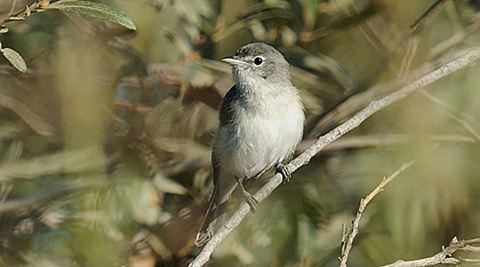| Length: 4.5 to 5.0 in (11.5-12.5 cm) |
| Wingspan: 6.7-7.5 in (17-19 cm) |
| Weight: 0.3-0.3 oz (7.4-9.8 g) |
Listing Status
The least Bell’s vireo was added to the State of California’s list of endangered species in 1980. It was listed as endangered by the Service on May 2, 1986 due to a significant range-wide decline in population related to extensive habitat loss and degradation associated with urban development, exotic plant invasion, and expansion of agricultural practices into riparian riparian
Definition of riparian habitat or riparian areas.
Learn more about riparian zones. Brood parasitism by the brown-headed cowbird was also identified as an issue.
Range and Habitat
Least Bell’s vireos winter in southern Baja California, Mexico, where they occupy a variety of habitats, including mesquite scrub within arroyos, palm groves, and hedgerows bordering agricultural and residential areas.
Migration
Least Bell's vireos winter in Southern Mexico. They head south by September and come back by mid-March to early April.
Breeding Season
These birds generally arrive in southern California breeding areas by mid-March to early April, with males arriving before females and older birds arriving before first-year breeders. Least Bell’s vireos generally remain on the breeding grounds until late September, although some post-breeding migration may begin as early as late July.
Refuge Occurrence
Within the Otay-Sweetwater Unit, critical habitat for the least Bell’s vireo has been designated along the Sweetwater River. This portion of the vireo’s critical habitat extends along the river floodplain from the northeastern end of Sweetwater Reservoir to about one mile (1.6 kilometers) east of the intersection of Highways 54 and 94. Critical habitat for the least Bell’s vireo has also been designated along Jamul/Dulzura Creek to the north of the Lower Otay Reservoir, just outside the Refuge boundary.




